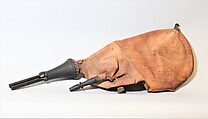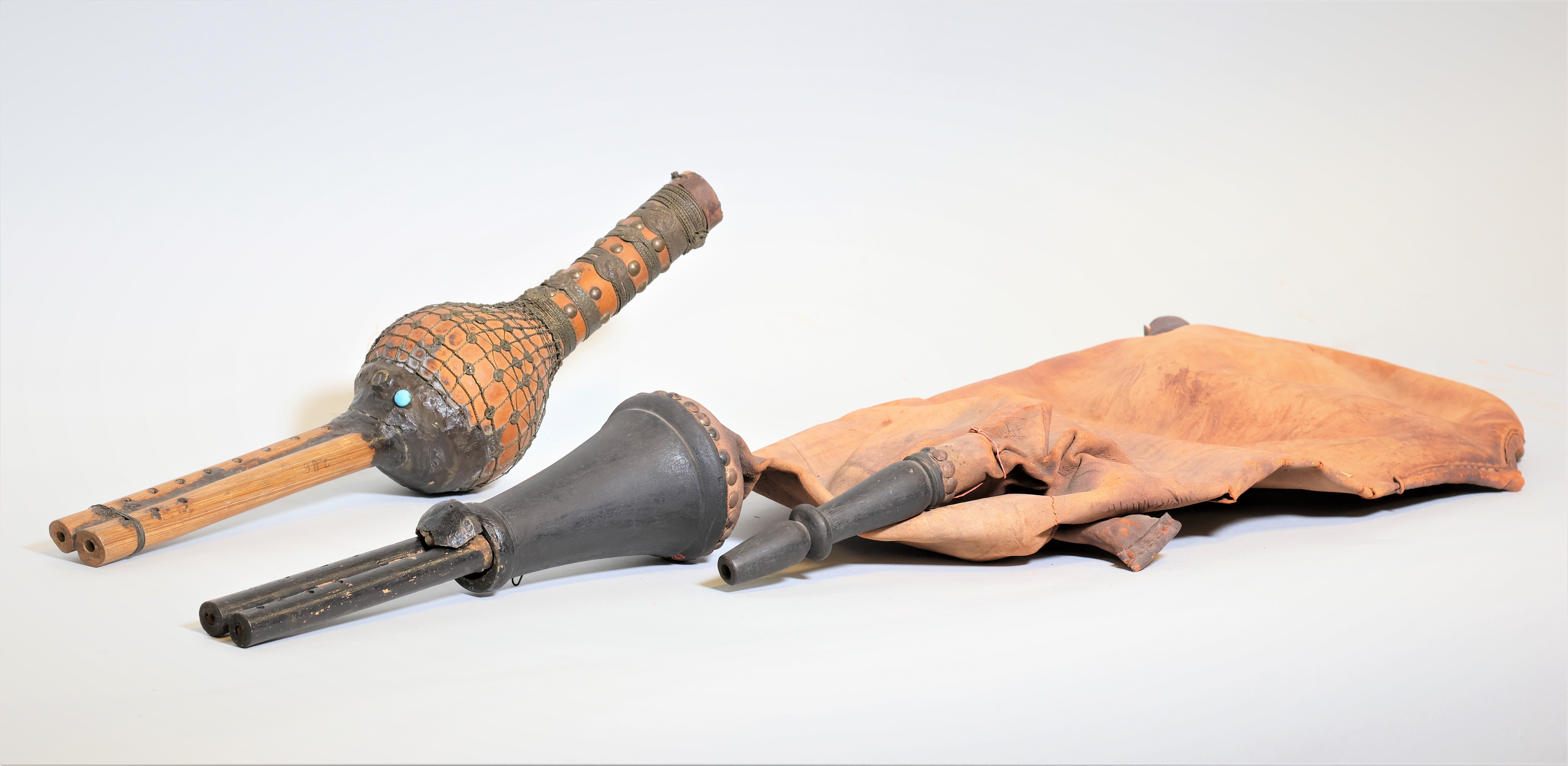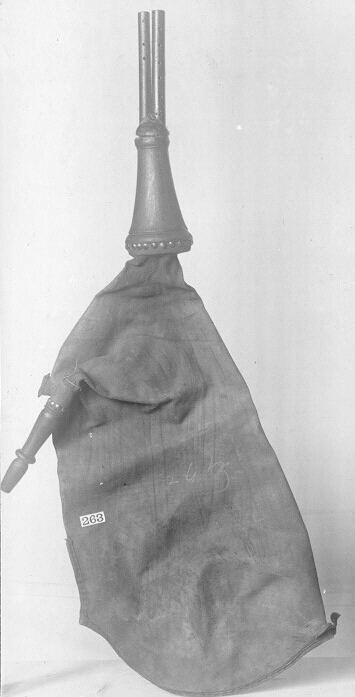Mashak
Not on view
This bagpipe consists of a cylindrical melodic pipe with seven fingerholes and one thumbhole, and a parallel cylindrical pipe with three holes, one of which is blocked with wax. This parallel pipe would have been used as a drone, with wax plugged into the holes to adjust the pitch. The two parallel pipes are fitted into a conical stock, fixed with black wax. It features an insufflation pipe made out of turned wood, and has a bag made out of tanned animal hide. The bag is sewn at the rear end, and one of the forelegs of the animal is also sewn shut. The insufflation pipe is fitted into other foreleg, while the chanter and drone stock is fitted into the neck of the animal hide. The bag is nailed to the stock with round brass pins.
The instrument had arrived in the collection by 1901, as it features in the first preliminary catalogue (Metropolitan Museum, 1901). It is uncharacteristically said to be from Burma, a geographic region where bagpipes have not historically been documented. Nor is this instrument similar to Indian bagpipes: Southern and Central India featured bagpipes that were used as a drone (see sruti upanga, object number 89.4.264), and North-Western India featured instruments with a parallel chanter and drone, but played with only one hand. Rajasthani musicians cup their free hand at the bottom of the parallel pipes, and sing as they accompany themselves with the instrument (Cooke 2019, Metropolitan Museum archives).
This instrument, however, is unlike these two main types of bagpipes found in India. Upon closer observation, one notes that the parallel pipes are strikingly similar to the double pipes found on the pungi, a double pipe instrument fitted in a gourd, that makes the use of circular breathing. A nineteenth-century pungi in the Metropolitan Collection (89.4.286) presents almost identical features: two parallel cylindrical pipes made out of wood, one with eight fingerholes, the other with three, both with narrow bores like the bagpipe. The pungi pipes are inserted into a gourd and fixed with black wax, much like the bagpipe pipes are fitted into the stock. The organological similarity of these two instruments, leads one to think that this bagpipe may be the amalgamation of pungi pipes and a bagpipe bag. Aesthetically, the brass pins used to attach the stocks to the bag, are also found on this particular pungi, showing a consistency in material and decorative features. Interestingly, these brass pins are also found on another Indian bagpipe in the collection acquired in 1903 (object number 89.4.2983). If this instrument was made to be played, it might have been to relieve the musician of the circular breathing technique used to play the pungi. Another advantage of attaching a bag to the pipes is to allow the musician to sing. Whether this instrument was played in this form is uncertain. If it was, it could have been a technological experiment, which does not seem to have been otherwise retained in India or in Burma.
(Cassandre Balosso-Bardin, 2023)
Technical description
2 darkened wood chanters with cylindrical bores, R 22.6 cm, 7/1 holes; L 22.2 cm, 3/0 holes;
Left chanter probably acting as drone since 1 fingerhole is plugged;
2 single downcut cane reeds, R9 cm, L7.7cm;
Turned darkened wood blowpipe (approx. 19 cm) fitted directly into bag, without stock or valves; Leather bag, sewn, with welt attached partway around bottom and end, one foreleg sewn closed, neck and foreleg holding pipes;
Large funnel-shaped chanter stock (approx. 18 cm) and blowpipe have turned grooving,
References
Cooke, Peter, 2019. Email Communication, instrument file 89.4.2938, Metropolitan Museum Archives.
Metropolitan Museum of Art, 1901. Preliminary catalogue of the Crosby-Brown Collection of musical instruments of all nations. I, Gallery 27. New York, Metropolitan Museum of Art
This image cannot be enlarged, viewed at full screen, or downloaded.
This artwork is meant to be viewed from right to left. Scroll left to view more.




